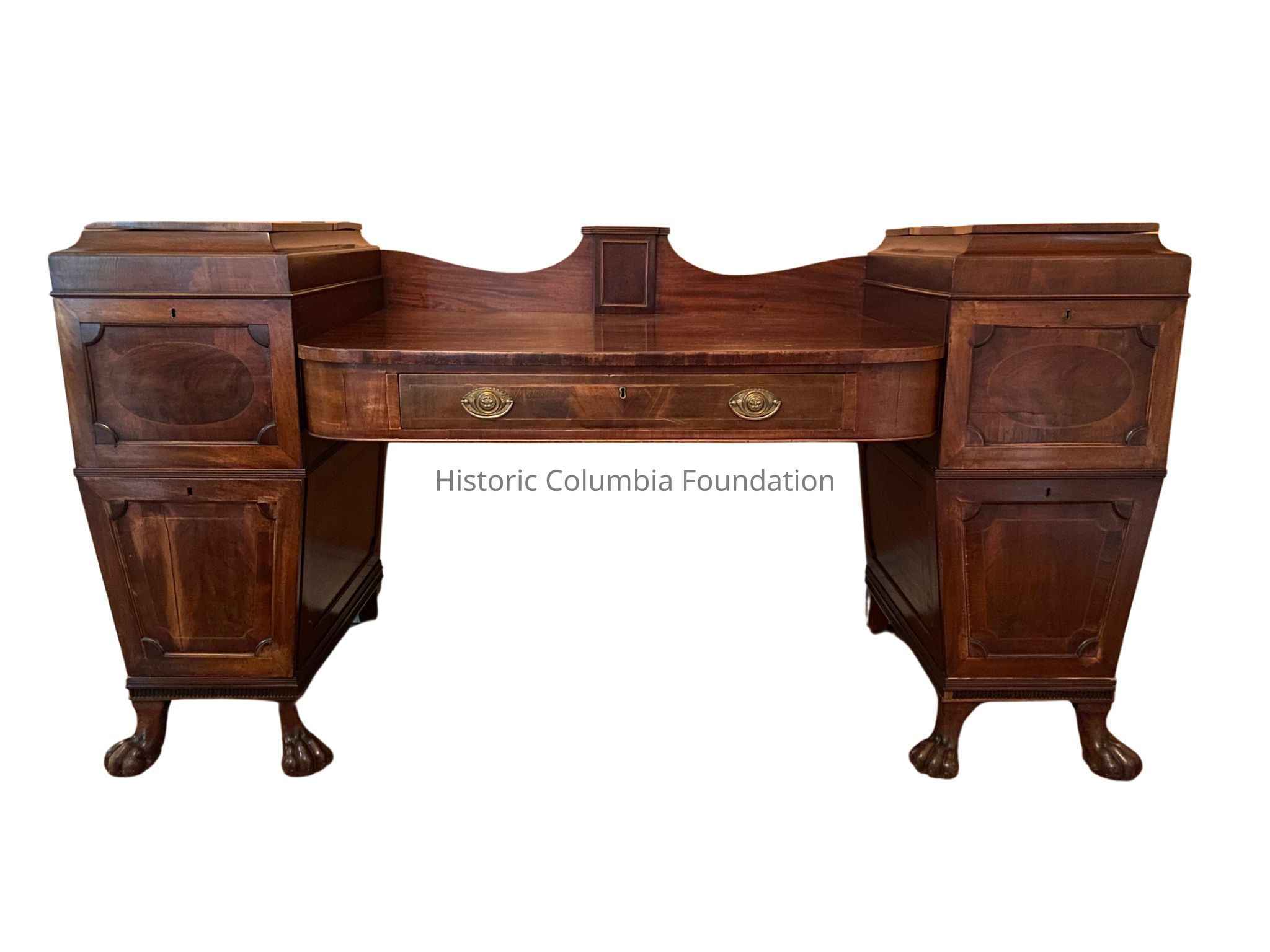Use
Sideboards can be placed in any room of the house, but they were most commonly used in dining rooms to both display and store dishes, especially during the 19th century.
This mahogany sideboard was based on an 18th-century design by English architect Robert Adam (1728–1792) that combined two separate pedestals and a tabletop. Popularized in the early 19th century, sideboards like this one were equipped with functional drawers and compartments, one of which was typically a built-in cellarette—or a lead-lined drawer that was used as a cooler when ice was added. In this case, the cellarette is in the lower left pedestal.
The ice came from lakes in New England where blocks were cut in the winter and shipped to Charleston in specially constructed boats. The ice then came to Columbia by boat where it was unloaded at a dock on Gervais Street and then stored in egg-shaped icehouses deep underground. Due to the cost of transporting and storing ice, chilled beverages were a luxury during the 1800s. The opposite pedestal contains a compartmentalized drawer designed for storing bottles.
